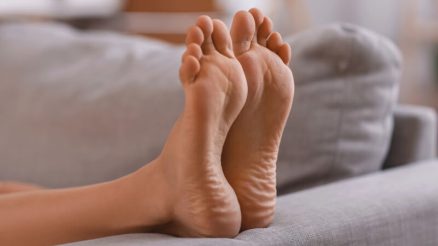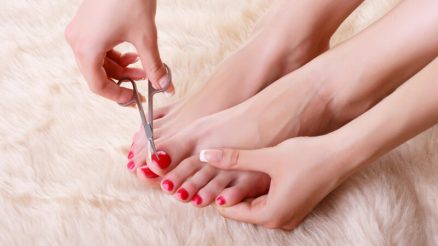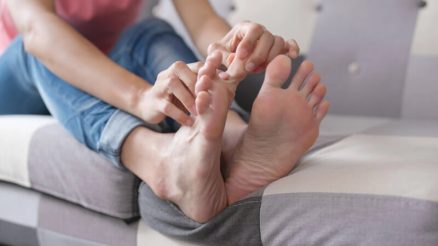That nagging ache in the ball of your foot can turn every step into a discomfort. Whether it’s a dull throb or a sharp sting, pain in the metatarsal area (the ball of your foot, just behind your toes) is a common complaint. It can stem from various causes, including ill-fitting shoes, strenuous activities, prolonged standing, or underlying conditions like metatarsalgia, bunions, or Morton’s neuroma.
While it’s always wise to consult a healthcare professional for persistent or severe pain, many mild to moderate cases of ball of foot pain can be effectively managed with simple home remedies. Let’s explore some gentle yet powerful ways to bring relief to your aching feet.
Understanding the “Ball” of Your Foot
The ball of your foot is a crucial part of your foot’s anatomy, bearing a significant amount of weight and impact with every step. It’s composed of the heads of your metatarsal bones, which connect to your toes. When this area becomes inflamed or irritated, it can lead to discomfort that impacts your daily life.
Effective Home Remedies for Relief
Here are some tried-and-true home remedies that can help alleviate pain in the ball of your foot:
1. R.I.C.E. Protocol (Rest, Ice, Compression, Elevation)
This classic method is your first line of defense against most musculoskeletal pains, including foot pain.
- Rest: Give your feet a break! Avoid activities that aggravate the pain. This means limiting standing, walking, and high-impact exercises.
- Ice: Apply an ice pack wrapped in a thin towel to the affected area for 15-20 minutes, several times a day. Ice helps reduce inflammation and numb the pain.
- Compression: Gently wrap your foot with an elastic bandage to provide support and reduce swelling. Ensure it’s snug but not too tight, as this can cut off circulation.
- Elevation: Lie down and prop your foot up above the level of your heart using pillows. This helps reduce swelling by allowing fluid to drain away from the injured area.
2. Foot Soaks: Warm Water & Epsom Salts
A warm foot soak can be incredibly soothing for tired and aching feet. Adding Epsom salts (magnesium sulfate) can enhance the benefits.
- How to: Fill a basin with warm (not hot) water and dissolve 1/2 to 1 cup of Epsom salts. Soak your feet for 15-20 minutes.
- Benefits: Warm water improves circulation and relaxes muscles, while magnesium in Epsom salts is believed to help reduce muscle soreness and inflammation.
3. Gentle Foot Massage
Massaging your foot can help improve blood flow, relax tight muscles, and release tension in the ball of your foot.
- How to: Use your thumbs to gently knead the painful area. You can also roll your foot over a tennis ball, golf ball, or a frozen water bottle for a deeper massage. Apply moderate pressure and move slowly.
- Benefits: Relieves muscle knots, stretches fascia, and promotes relaxation.
4. Proper Footwear & Orthotics
One of the most common culprits of ball of foot pain is improper footwear.
- Choose Wisely: Opt for shoes with good arch support, ample cushioning, and a wide toe box that doesn’t cramp your toes. Avoid high heels, pointed-toe shoes, and excessively flat footwear.
- Cushioning & Support: Look for shoes with extra padding in the forefoot area.
- Orthotic Inserts: Over-the-counter or custom orthotic inserts can provide additional arch support and cushioning, helping to redistribute pressure away from the ball of your foot. Metatarsal pads, specifically, can be very effective in lifting and separating the metatarsal heads.
5. Stretching Exercises
Gentle stretches can help improve flexibility and strengthen the muscles in your feet and calves, which can alleviate pressure on the ball of your foot.
- Calf Stretches: Tight calf muscles can put extra strain on the forefoot. Lean against a wall with one leg back, keeping your heel on the ground, to stretch your calf.
- Toe Curls/Marble Pick-ups: Place some marbles on the floor and try to pick them up with your toes and place them in a cup. This strengthens the intrinsic foot muscles.
- Ankle Circles: Gently rotate your ankles in both directions to improve mobility.
6. Anti-Inflammatory Foods
Your diet can also play a role in managing inflammation.
- Incorporate: Foods rich in omega-3 fatty acids (like salmon, flaxseeds), antioxidants (berries, leafy greens), and turmeric can help reduce systemic inflammation.
- Avoid/Limit: Processed foods, excessive sugar, and unhealthy fats can contribute to inflammation.
7. Over-the-Counter Pain Relievers
For temporary relief, non-steroidal anti-inflammatory drugs (NSAIDs) like ibuprofen or naproxen can help reduce pain and inflammation. Always follow dosage instructions and consult your doctor if you have any underlying health conditions.
When to See a Doctor
While home remedies are effective for many, it’s important to know when to seek professional medical advice. Consult a doctor or podiatrist if:
- The pain is severe or doesn’t improve with home remedies after a few days.
- You experience numbness, tingling, or burning sensations.
- You have an open wound or signs of infection (redness, warmth, pus).
- The pain is accompanied by swelling or discoloration.
- You have a history of diabetes or other conditions that affect foot health.
Conclusion
Pain in the ball of your foot can be disruptive, but with a combination of rest, appropriate home care, and mindful footwear choices, you can often find significant relief. Listen to your body, be consistent with your remedies, and don’t hesitate to seek professional help if your symptoms persist or worsen. Your feet work hard for you, so give them the care they deserve!








